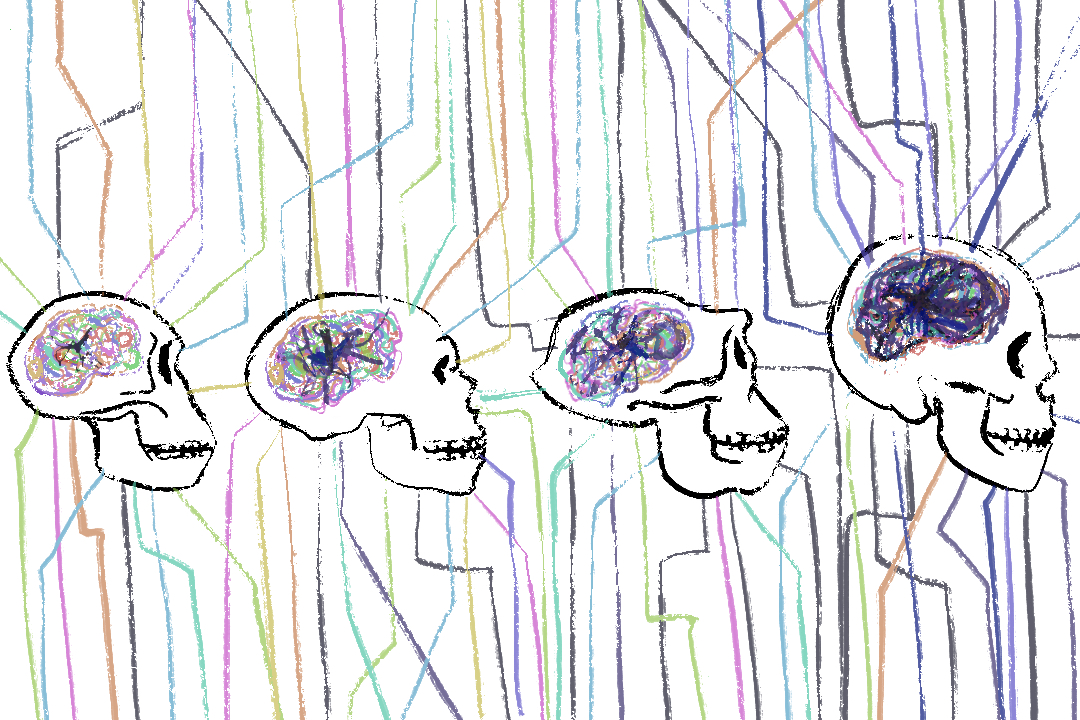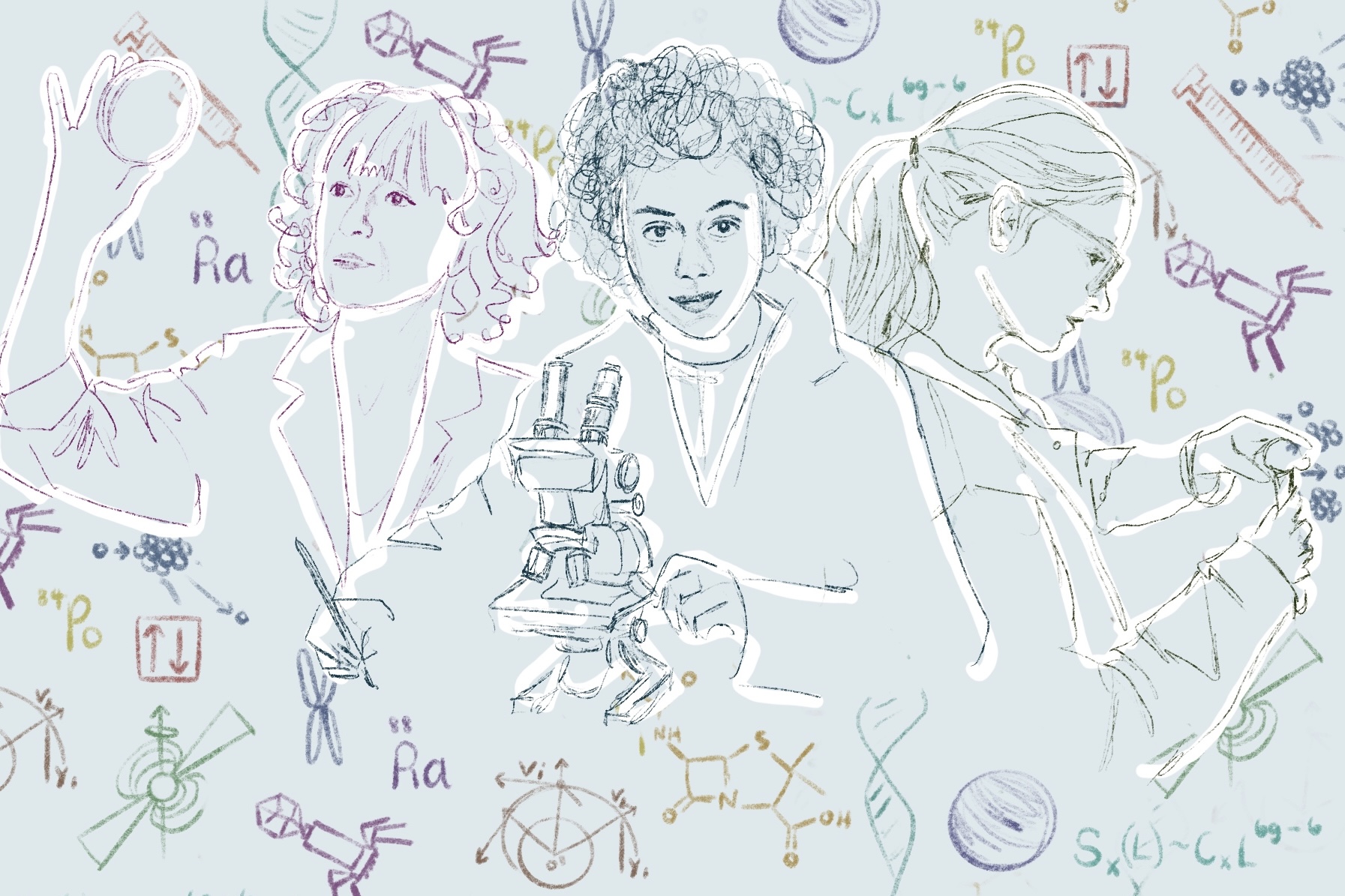What if we could control brain activity simply with a beam of light? Photo credits: Mahdi Bafande via Unsplash
A rat wanders around a stick, occasionally poking it with its feet. Suddenly a blue light turns on, and it starts tearing, biting, and ripping at the stick until the light turns off. This is optogenetics, which aims to control neuronal activity—down to the level of a single neurone—using light. Optogenetics is a relatively new field, with most development occurring in the early 2000s. Its science fiction-like power simultaneously sparks hope for medical research and concern surrounding significant ethical issues.
…genetically modifying individual neurones to express light-sensitive proteins known as opsins, usually through the use of a non-pathogenic virus.
The core mechanism of optogenetics is genetically modifying individual neurones to express light-sensitive proteins known as opsins, usually through the use of a non-pathogenic virus. Opsins respond to particular wavelengths of light. While blue light activates opsins that excite neurones, yellow light activates different opsins that silence them. Optogenetic control is far more precise than drugs or electrical stimulation, and can act as a ‘wireless’ form of communication between the controller and the neurones.
Beyond vision, optogenetics theoretically allows more targeted approaches to mental illnesses, such as anxiety and depression.
Optogenetics has profound implications for treating diseases, influencing behaviour, and improving research specificity. The first optogenetic therapy, RST-001, has already been approved as an Investigational New Drug (a permit to start testing a drug in people) by the FDA. RST-001 aims to treat retinitis pigmentosa (RP), a heritable genetic disorder that starts with a loss of peripheral vision that develops into total blindness. Beyond vision, optogenetics theoretically allows more targeted approaches to mental illnesses, such as anxiety and depression. Optogenetics–based therapies have the potential to be faster and have fewer side effects than medication, which are more broad–spectrum. Medication targets molecules that are often also found outside of the area of interest, eliciting side effects and unwanted immune responses. The specificity of optogenetics reduces side effects, and may enable more personalised clinical treatments. Personalisation is important for addressing the complex interplay between physiological and environmental factors inherent to mental health conditions.
Beyond clinical applications, optogenetics could help researchers conduct more sophisticated experiments. Optogenetics allows an understanding of the structure and function of the brain with an unprecedented level of resolution, resulting in the discovery of connections, mechanisms, and areas beyond the scope of MRI-level detection. Additionally, optogenetics could help animal testing become more ethical as it is less invasive than other approaches, enabling the reversible and precise manipulation of neural activity without the need for permanent techniques like electrode implantation or lesioning.
One major risk is the potential erosion of identity through creating opportunities for external control…
While optogenetics holds remarkable promise for neuroscience and medicine, it also raises significant ethical and existential concerns. One major risk is the potential erosion of identity through creating opportunities for external control. Although optogenetics has yet to be used in psychiatric settings, an experiment from 1963 which involved implanting electrodes into a schizophrenic patient’s brain illustrates risks that could be extended to optogenetics. In this experiment, the patient could self-administer pleasurable or aversive brain stimulation using switches connected to the electrodes. Over time he became addicted to pressing the switch associated with reward, even neglecting hunger. If optogenetic approaches were used in a clinical setting, could they result in detrimental long-term effects like addiction? If we extend this further, could optogenetics potentially allow for external control over personality, emotion, and behaviour that may disrupt one’s sense of self?
Potential misuse of optogenetics is a serious concern, especially as scientific advancements have been taken out of their original beneficial context and abused throughout history. Governments have previously exploited medical procedures to reinforce their political and social agendas, such as the forced sterilisation of marginalised groups under eugenics programmes, including those with mental health issues or cognitive disabilities. Optogenetics, with its unparalleled precision, could be used as a tool of control through modifying behaviour, perception, and emotional responses. Certain regions of the brain are adapted for specific tasks. For example, Wernicke’s area is integral to language recognition, and the amygdala is essential for processing and regulating emotions such as fear. There is a real risk of blurring the line between therapeutic application and abuse—especially as ‘madness’ has a long history of being used as an excuse for suppression—raising urgent questions about consent, autonomy, and control.
Optogenetics, with its unparalleled precision, could be used as a tool of control through modifying behaviour, perception, and emotional responses.
Direct mind control remains in the domain of fiction, but controlling behaviour through neurological or psychological manipulation has historical precedents. In the fictional world of A Clockwork Orange, the “Ludovico Technique” erases the subject’s capacity for violence through linking violent impulses with intense nausea. It is similar to real–life aversion therapies sometimes used by recovering alcoholics. The drug disulfiram inhibits the enzyme aldehyde dehydrogenase, causing many of the effects of a hangover, such as nausea, to be felt immediately following alcohol consumption, which ultimately discourages alcohol consumption. Optogenetics could create more sophisticated forms of aversion therapies through its targeted control of neural circuits, which could benefit treatments for mental illnesses. Nevertheless, optogenetics could also be abused for forced behavioural changes, hence opening up ethical concerns about autonomy and free will.
Whether innovation or fear prevails depends on the interplay between the potential rewards and costs.
Like Uncle Ben from Spiderman said, “With great power comes great responsibility.” Currently, the direct application of optogenetics to treating the human central nervous system is far from present capabilities. Scientists and laymen alike tend to overestimate the speed of scientific progress — in the 1950s, many thought that humans would have colonised Mars by the year 2000. Nonetheless, the tug-of-war between innovation and fear still stands. Whether innovation or fear prevails depends on the interplay between the potential rewards and costs. Right now, there is more concrete evidence to support the therapeutic benefits of optogenetics-based treatments. Additionally, using optogenetics for behavioural control is currently unfeasible due to gaps in understanding the physiology of human behaviour and the high complexity and cost of large-scale implementation. The potential benefits reaped by advances in optogenetics outweigh the potential costs. After all, science should be driven by curiosity and optimism, not fear.





